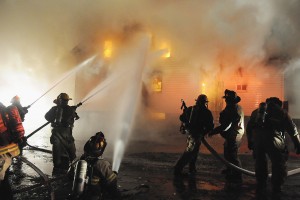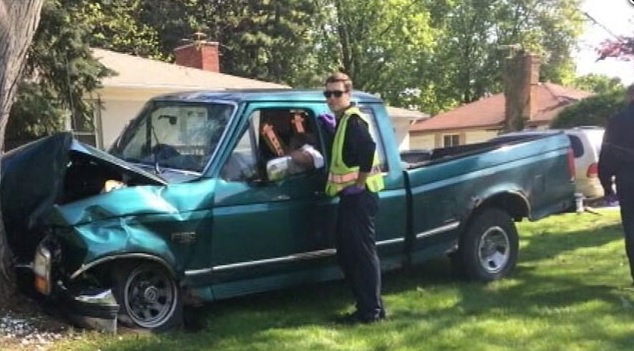Is anyone surprised? Baltimore City’s rotating closures fits the pattern and becomes critical only after someone dies.
Today’s Baltimore Sun story on the search for money to halt rotating closures
WJZ-TV story on 911 calls for Presstman Street fire
Press release from IAFF Local 734
“No, this was not the result of budget cuts. Based on the distance of the current stations we are still within a great safe zone as far as responsiveness. It’s not because of the rotation.”
Those are the words of Baltimore Mayor Sheila Dixon from her response to WJZ-TV following the death of a man inside a burning rowhouse on Presstman Street early Wednesday morning. The closest truck company to that home was shut due to the city’s rotating closure policies.
We are not sure what investigation into the response to the fire, if any, Mayor Dixon is using to come to her conclusion. Clearly there were a number of factors involved in this response, including crews being sent to the wrong location based on a call taker not hearing the correct address from a woman trapped in the home.
 Baltimore City Fire Chief Jim Clack has pretty consistently told the news media in Baltimore and in previous emails to STATter911.com that rotating closures do have an impact on response times. He has also indicated response times have gone up some since the closures started.
Baltimore City Fire Chief Jim Clack has pretty consistently told the news media in Baltimore and in previous emails to STATter911.com that rotating closures do have an impact on response times. He has also indicated response times have gone up some since the closures started.
On Wednesday, Chief Clack told the Baltimore Sun the department is still reviewing the response to the fire, but indicated the first truck company’s arrival on the scene likely would have taken longer than the closed Truck 18:
The search-and-rescue company nearest the Davis’ home, Truck 18, was closed overnight. Had it been in the station when the call came, the truck could have arrived in about half the time the first unit took to arrive, said Fire Chief James S. Clack.
On Thursday Chief Clack modified that statement a bit. Also from The Baltimore Sun:
Also yesterday, Clack said that if the truck had been in operation, it might not have arrived at the fatal fire earlier than other units because it would have been sent to the incorrect address after a garbled initial call. That was a change from his initial assessment of the fire response.
If units had gone to the right address initially, the closure of the truck “would have affected our response time,” he said.
Right now, City Council members and the mayor are trying to now come up with money to end these closures for the rest of the fiscal year.
Isn’t this usually how it goes with rotating closures? Of course it is.
There is plenty of case history in Baltimore, in Washington and around the country where a fatality near a closed company allows those who hold the purse strings to suddenly see the light. In this case, to be fair, just hours prior to the deadly fire, city leaders were finally starting to address the idea of finding overtime money for the department to stop the rotating closure policy. But now, all indications are it is THE priority.
IAFF Local 734, in a press release yesterday afternoon, called the closures “firehouse roulette” and is telling citizens the mayor and the fire chief “have placed a price tag on yours and your neighbor’s lives”.
You don’t have to be a genius or the Amazing Kreskin to have predicted a while ago that this was exactly how the story of rotating closures in Baltimore would play out. Even a lowly blogger living 40-miles-away saw this coming. Here’s what we wrote one year and two-days before the fire on Presstman Street occurred after learning that rotating closures were in store for Baltimore:
Having covered three rounds, in three different decades, of what union officials called “firehouse roulette” in Washington, DC, there is a lot of precedent you can point to indicating how this policy is likely to play out. In fact the City Paper article talks about a previous Baltimore City rotating closure policy:
In 1995 and ‘96, BCFD tried to keep overtime costs down by closing some firehouses during certain shifts. Such “rotation closures” became controversial when fires broke out near firehouses that were temporarily shut down.
That’s exactly what happened each time in Washington. It is also what happened earlier this year when medic units were shut down because of Prince George’s County, Maryland furloughs.
True, these are fiscally much more difficult times than any but the eldest among us have seen. But it all comes down to how much heat the political leaders can take when the inevitable headlines appear.
That 1998 Baltimore City Paper article I was referring to is from 1998 and gives the details of the cuts the Baltimore City Fire Department endured in the 1990s. It is well worth reading.





